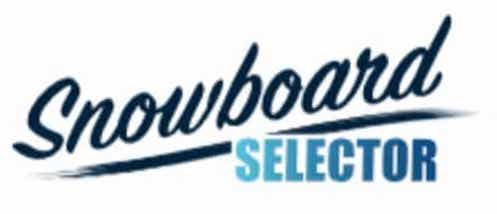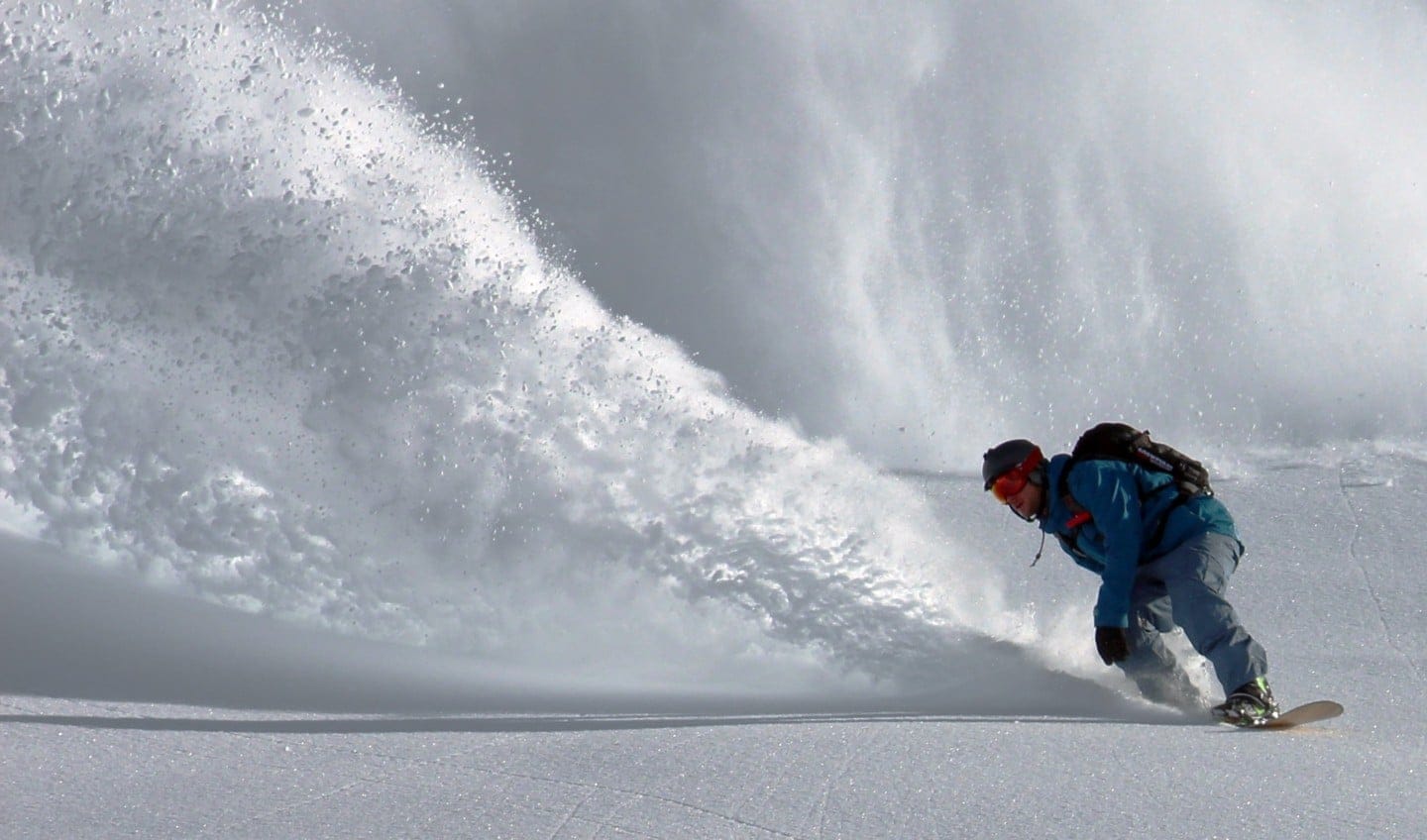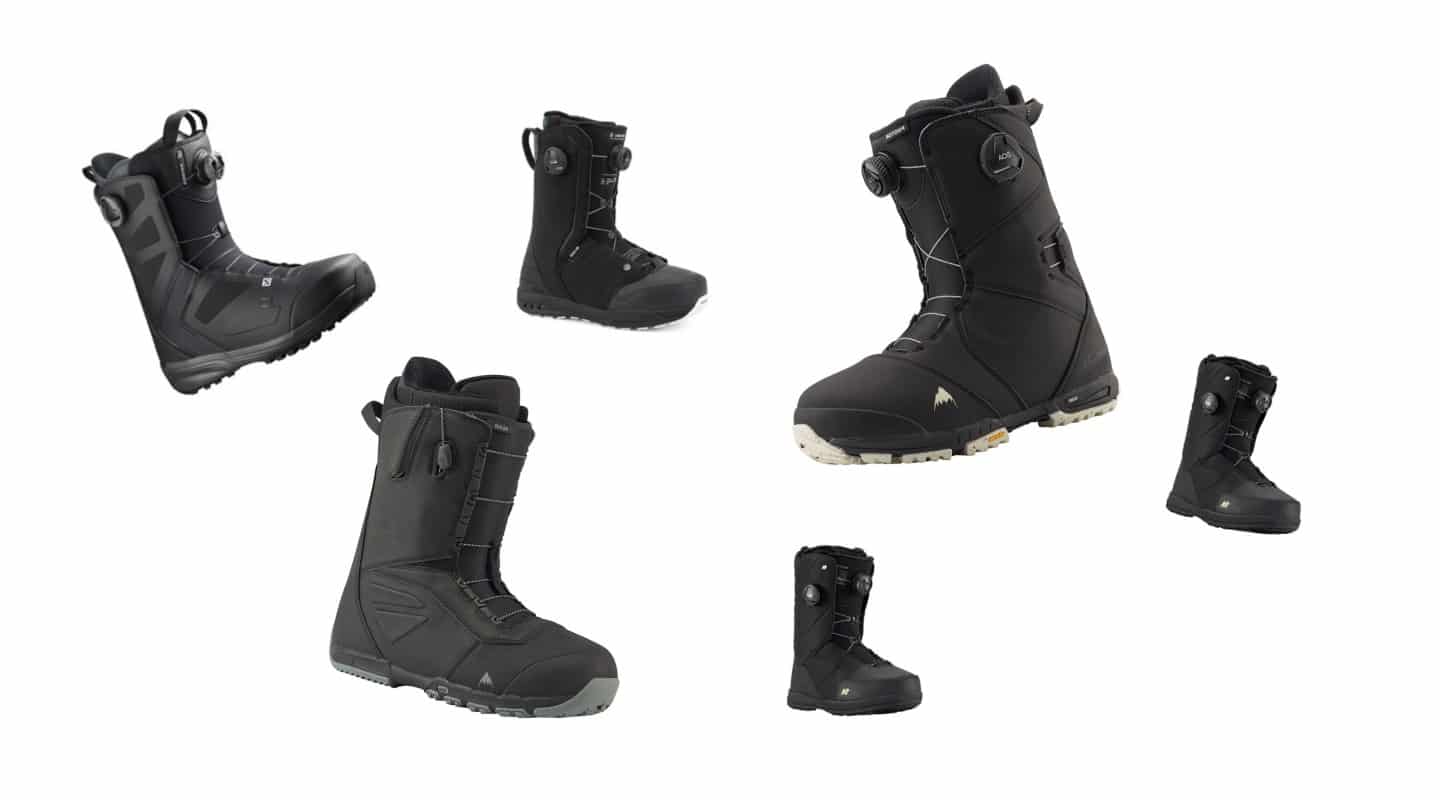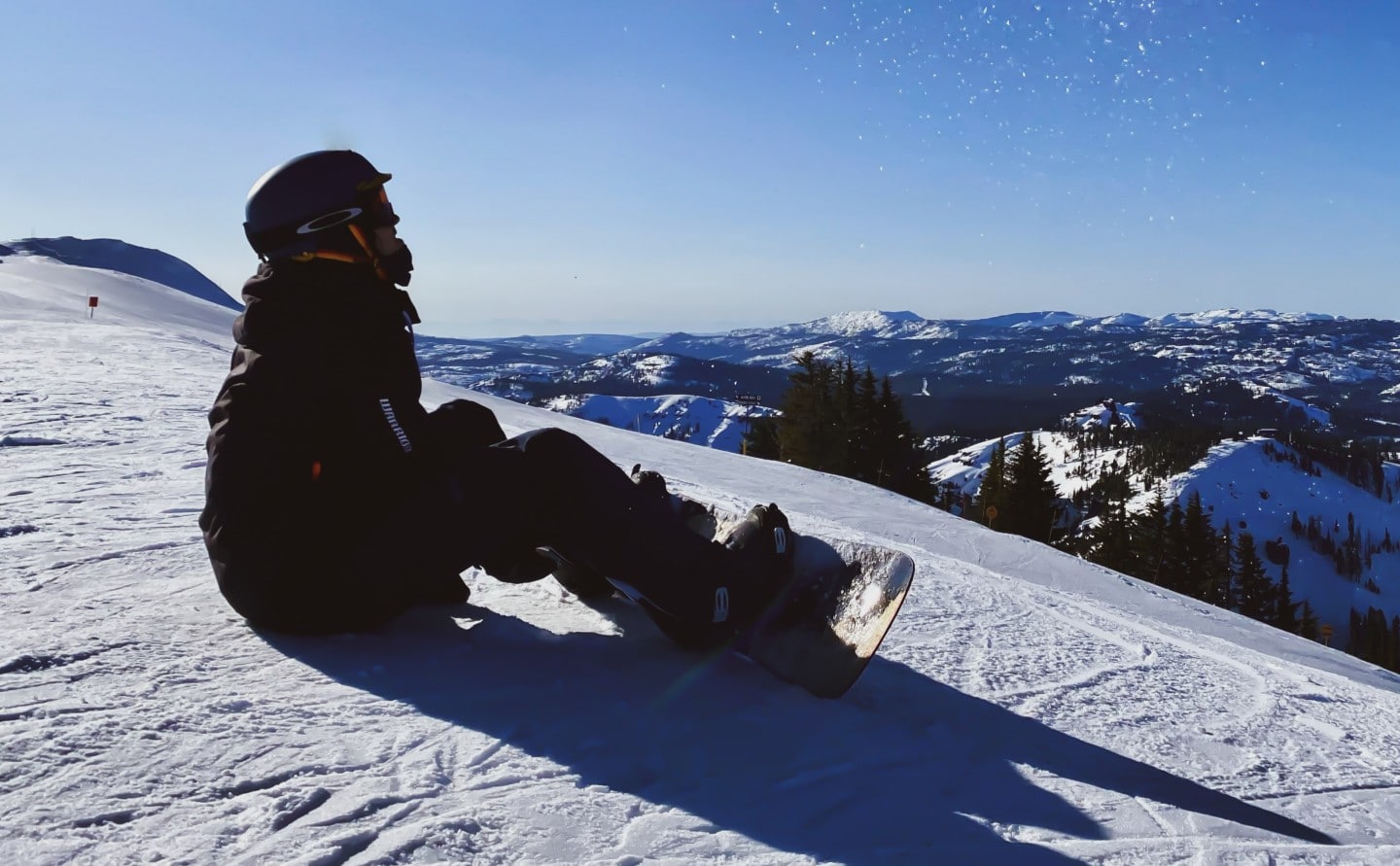Riding powder is the best feeling you can have on a snowboard. Powder snow is light, fluffy, fresh fallen snow. In fact, it is made up of about 90% air, which if you think about it, means that riding powder is almost like flying through the air!
“This is why you really need to learn how to ride it properly so that you can experience the joy of powder riding for yourself.”
We can actually work on powder riding technique on the groomed slopes. Although this doesn’t feel the same as riding in powder, it will give you a good idea of the theory, save you time and not waste good snow when you do venture off into the deep stuff.
Use the length of the board
When riding powder we need to use the full length of the board. If you try putting your board across the fall-line in deep powder and side slipping, its just not going to work! Your board will dig into the snow and you’ll fall forwards down the hill. This is because you would be using the width of the board rather than the whole length, from tip to tail.
We can think about the turns the same way. If we have the board riding along its length from tip to tail then we will get a lot more float than if we skid the board sideways across its width. If you are riding powder correctly then the tail of the board should follow in the same track as the nose.
In this way, riding powder is a lot like carving. But there are some major differences in technique…
Keep the nose up
The first major difference between riding powder and riding hard pack snow is your weight distribution. On hardpack you ride, most of the time with your weight evenly distributed between your 2 feet.
In powder, you ride a lot more from the back of the board with your weight on your back foot. How far back your weight needs to be depends on a couple of factors:
- How fast your riding
- How deep the snow is
The faster you ride, the less far back your weight needs to be. And the deeper the snow is the further back you need your weight. A powder-specific board has a longer wider nose, that floats above the snow, making your life easier
So if you’re riding fast in not very deep snow, then you don't need your weight to be too far back. If you are riding slow in really deep snow , then you’ll need to get your weight right to the back.
A lot of people talk about leaning back when riding powder. But for me, we don’t really lean back, which will put you off balance. It's more just a shift of your weight over your back foot. To do this all you need to do is make sure your back knee is more bent than your front knee. This will shift your hips toward the tail of the board and you’ll feel more weight pushing through your back leg.
The more weight you need on your back foot, the more you bend your back knee.
To put this into practice, you can start off with some wide-open, cruisey turns on an easy blue slope. Next, try shifting your weight back towards the tail of the board and initiating the turns with your back foot. You can use your back foot to turn in the same way as you use your front foot when you first learn to turn on a snowboard.
Try to feel your back foot rolling from the toes to the heel as you turn the board. This will be a pretty horrible feeling turn on a groomed run, but once you get into the powder it will feel awesome!
Use the surface area
The third difference in how you need to adjust your riding is in how you edge the board. On hard snow you want to be focussing on creating edge angles and digging your edges into the snow. But, if you edge too hard in powder the board will sink into the snow too much.
Instead of thinking about edging the board, try and think about using the whole surface area. Imagine that with each turn you are creating a platform of snow under your board and then you are pushing the base of the board against that platform.
Keep your speed up
As I mentioned above, the faster you go the more float you will get out of your board. So setting off with your board straight down the hill will help your board get up to speed before you start making your turns.
Next your turns should be more open than turns that you’d do on the groomers.
The extra resistance created by the deep snow will slow you down so your turn shape should be more open and more pointed down the hill.
Try making your turns bigger and doing fewer of them. Your board should spend more time pointing more down the hill and less time turning across the hill.
Plan ahead
When starting out riding powder, its a good idea to try any maintain a constant speed. If you go too slow your board will get bogged down and you could end up walking out, and if you go too fast go could end up losing control.
So try and think a few turns ahead, look at the terrain and adjust your turns depending on how steep the slope is in front of you.
Get as much time practicing as possible!
It would be great if every day you woke up, you were greeted with a fresh foot of powder, but unfortunately, that is a pretty rare event! So when it does snow you need to make the most of it! Make sure you check the forecast and if it is going to snow, set your alarm so that you are on the first lift. That way you’ll be able to make the most of the fresh snow before it all gets tracked out.
Common mistakes when snowboarding in powder
These are some of the most common mistakes I see people making in the powder and the things I spend most time trying to correct when I’m teaching people:
Kicking the back foot around
This one comes from poor technique riding on the groomers, and its a mistake which is really common! To be able to kick your back foot around the turn you need to stand on your front foot, and you don't want to do that with deep powder! If you find yourself often catching your nose when turning then this could be the cause of the problem. The fix is to go back to basics of how to turn, so you can make smooth rounded turns. Then try making that same turn shape in the powder.
Leaning too far back
This is another common one, which comes from the common misconception that all you need to do in powder is lean back. But you can definitely lean too far back, which will put you off balance and make your back leg really tired! You just need the tip of the board above the snow, and remember – speed it your friend! Try taking a more direct line so that you get more float and can stand more on both feet.
Staying on your heel edge
A lot of riders out there struggle to turn onto their toe edge. Whilst you might be able to get away with this on groomed runs, poor technique will catch you out when you get into powder.
Again it comes down to the basic technique of how to turn! If you turn onto your toe edge by pushing out your back foot then you are going to struggle. Try finding a mellow powder run and just linking up smooth S turns. This will help you develop a feel for the toe edge turn before taking it to a steeper slope.
Hopefully these tips have helped. Riding powder is not only one of the best feelings that you can experience on your board, its one of the best feelings period! So its worth spending a little time working on technique so that when an epic powder day comes your way you wont be floundering in the snow but floating through it like a boss!
Powder Riding FAQs
Equipment choices
With all the choices of different types of snowboards on the market today it can be a little daunting deciding on which board you need for which conditions. So first off, lets clear up a few commonly asked questions about what kit you need to ride powder:




